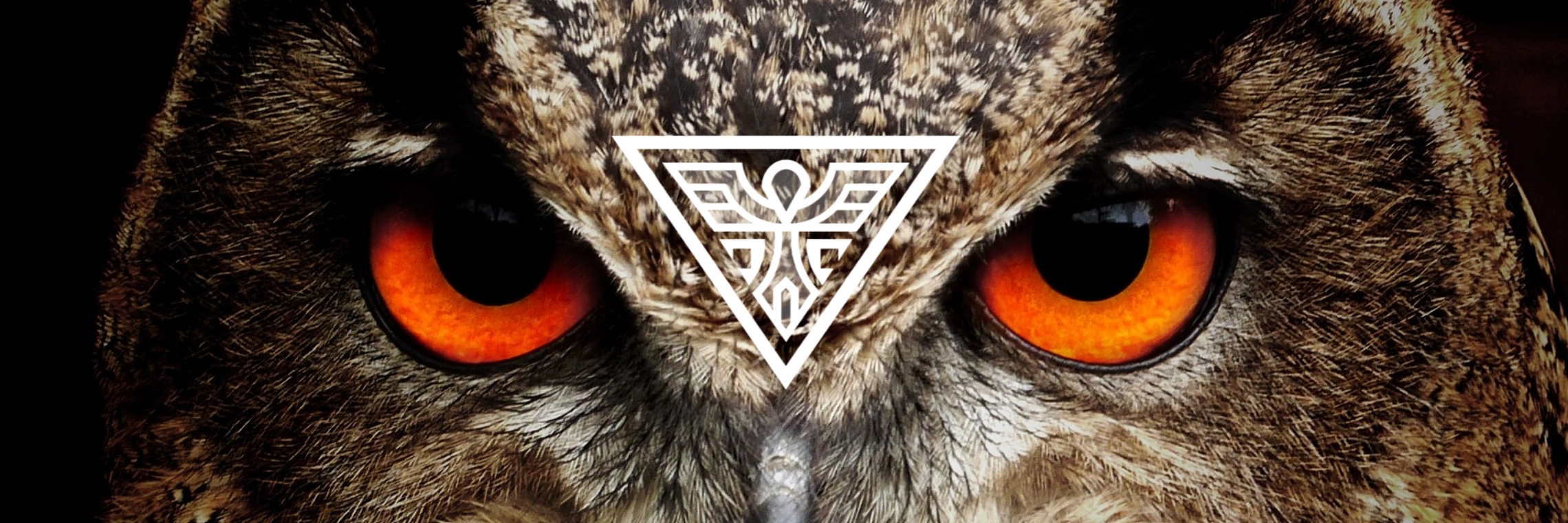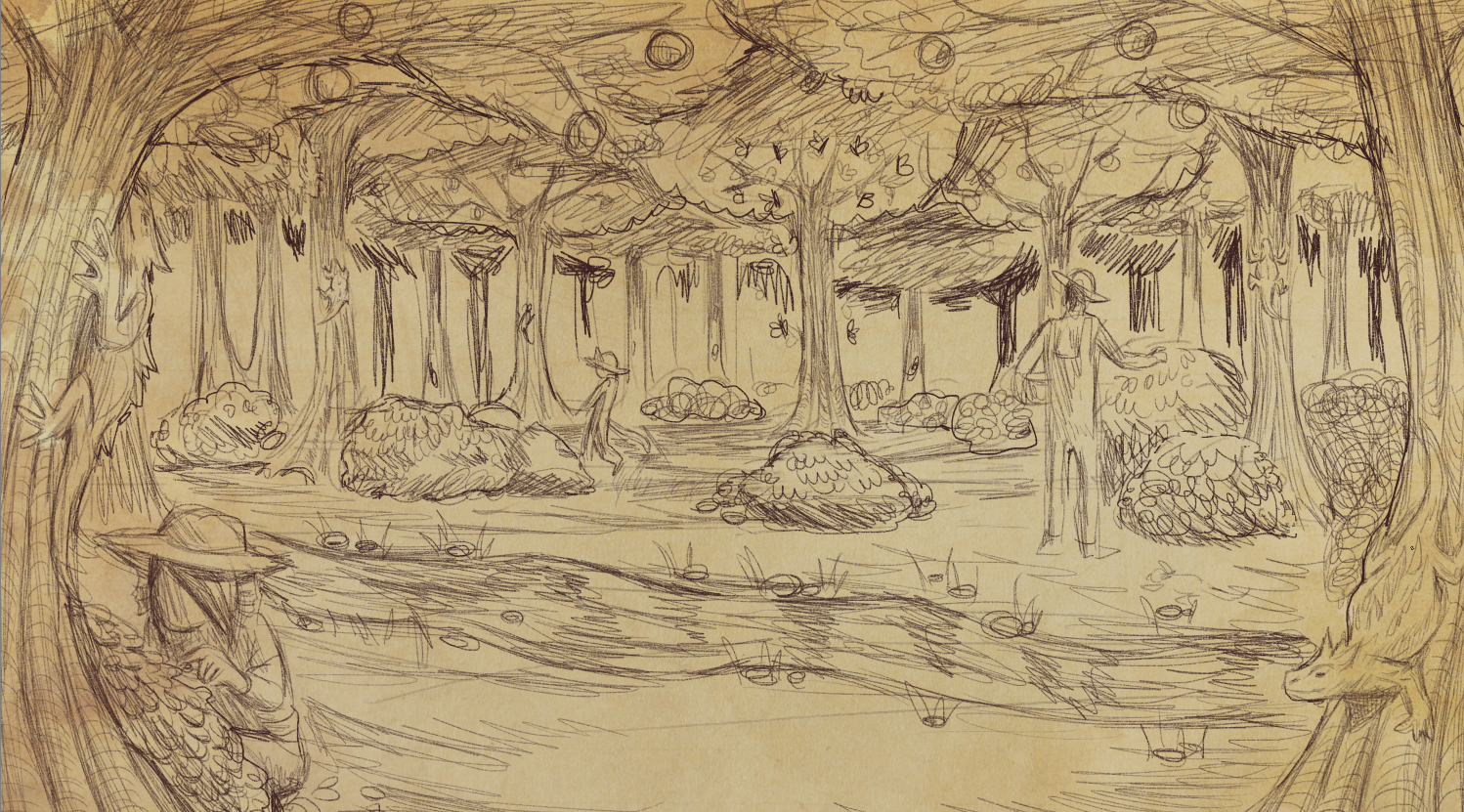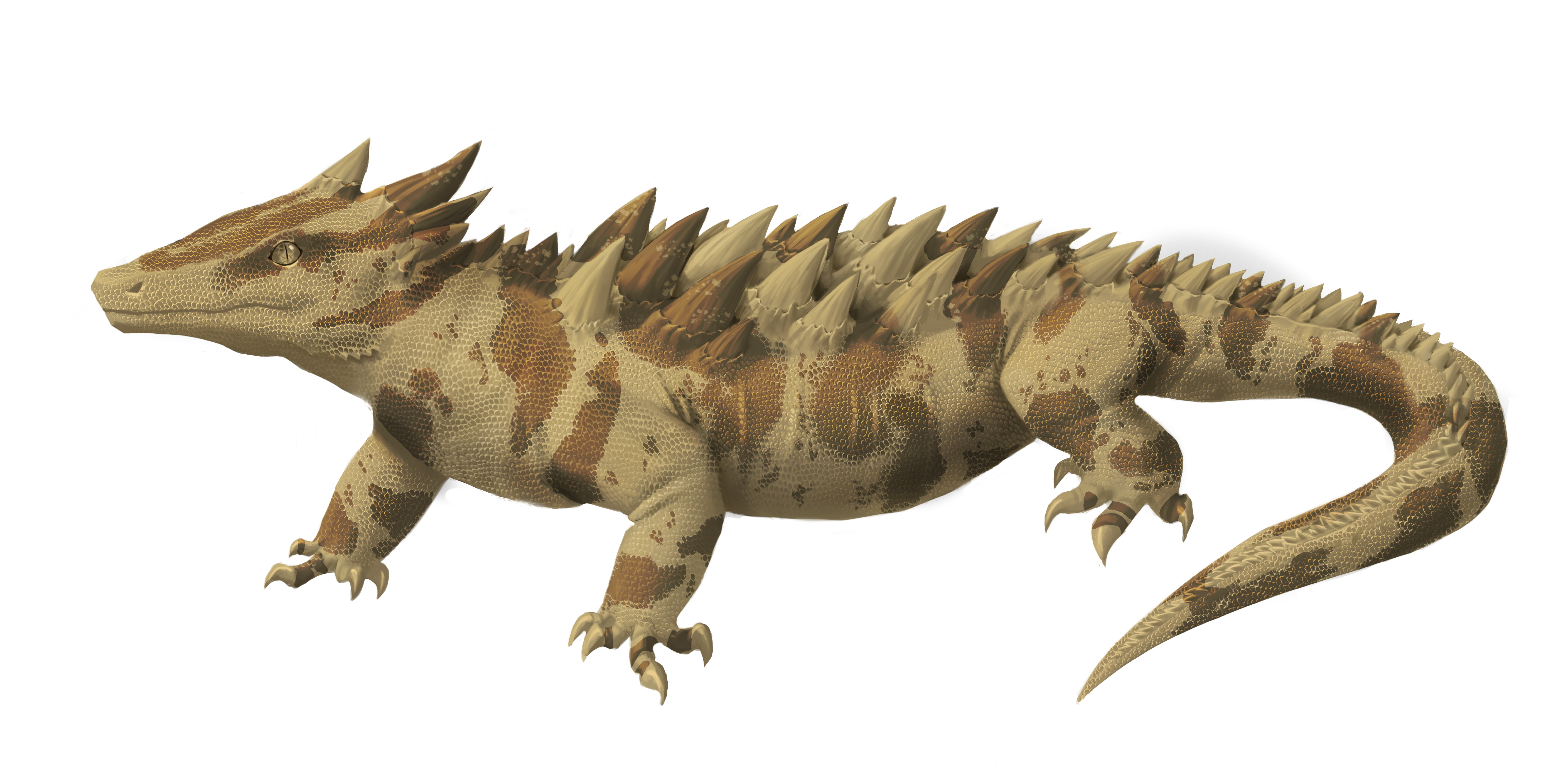drazikk lizard
Known for their extraordinary size, mild taste, and efficient laziness, the drazikk lizards of Janikk have become one of the staple food sources of the Jannadael. Today, large colonies of docile and well fed drazikk are common sights among Janikk's orchards.
Basic Information
Genetics and Reproduction
Drazikk lizards lay soft-shelled eggs, which the female protects in a stomach pouch until their shells have sufficiently hardened, which can take upwards of a week. During this time she will craft a nest in the local underbrush, most often within the roots of a fruit bearing tree.
The leather-like eggs appear lumpy and malformed when first buried, but will begin to expand and bulge as the young grow until eventually bursting free. Some drazikk mothers will remain to protect their nest until hatching, although most lose interest shortly after filling the nest. In all cases, young drazikk lizards are on their own.
Ecology and Habitats
A portion of the wall parted to reveal a large balcony, its structure also formed of living branches, but it was the scene from the balcony that caught Max's attention. Miles of small trees dotted the landscape below, interspersed with other clearly well cared for plants while a collection of sizable but calm-looking spiked reptiles wandered throughout, many sunning themselves on higher branches.
Dietary Needs and Habits
Drazikk are omnivores, preferring fruits and nuts but willing and able to fall upon larger, more mobile prey. Juvenile and adolescent lizards spend most of their time in the trees, enjoying the large varieties of fruits grown by the Jannadael. Their sharp hooked claws allow them to easily grip the bark of trees and crawl into the canopies, despite their impressive size.
Adults typically grow too large for climbing, instead spending the remainder of their life on the ground beneath the same canopies. Brood females will select a large fruiting bush beneath which they will dig their nest, using their heavy claws to cut through roots and undergrowth. They survive off the fallen and sometimes even rotten fruit from the trees, with no apparent ill effects, while their jaws allow them to crunch through even the toughest fruit pits.
Adult drazikk are also passable if lazy hunters, hiding beneath a bush or underbrush while they wait for prey to pass. They hunt in solitary, and have been known to down much larger animals than themselves, including the large antlered daakka, although these tactics have been proven ineffective against pack animals such as the clever and agile fylox. Drazikk are thorough eaters, capable of pulverizing and devouring even the bones of their prey.
Biological Cycle
Cold-blooded by nature, drazikk maintain their temperatures through a mix of sun basking, water bathing, and burrowing. They have proven themselves adept at surviving through difficult winters by burying themselves in the dirt until only their heads and spine spikes remain, serving as effective solar heaters with dirt insulation. In especially cold winters, they have been known to slow their heart rate and hibernate, although in milder years adolescent drazikk are equally as likely to spend their days seeking bark and nuts.
Additional Information
Social Structure
Drazikk do not keep a social structure, remaining largely indifferent to the presence of other drazikk outside of mating season. Younger lizards have been known to follow an older, slower adult in the hope of stealing their meals. This behavior will continue as long as the mooch remains uncontested.
While not territorial, drazikk are quite possessive of their food. Those tending to drazikk-breeding orchards therefore attempt to separate lizards who stray too close to each other's meals, as the resultant fighting has been known to harm the trees.
Uses, Products & Exploitation
The lizards are bred for their meat, which has become a staple white meat among the Jannadael. Lizard bites are a common finger-friendly appetizer, while drazikk patties, shredded lizard, and lizard soup are often considered comfort foods. Drazikk meat has also found its way in a variety of recipes and dishes, including many lower-fat meal options aimed at the carnivorous katanoj.
Drazikk are permitted free reign within many of the orchards across Janikk, including those at Mejjit Niwok. The meat of a full-grown lizard is tough, only fit for stews and slow roast, leading to the culling of most drazikk in adolescence or young adulthood, although productive brood lizards will typically enjoy a full and pampered lifespan.
In addition to their meat, drazikk leather has proven quite versatile, serving as a major component in a variety of products across Janikk, including some fashionable variations on the famed telekinetic boots and gloves. When treated correctly, the scaled leather is surprisingly supple, although still stiffer and rougher than more traditional mammalian leather.
Perception and Sensory Capabilities
Drazikk lizards' eyes are well-attuned to capturing movement at remarkable distances, although they cannot see well in dark or even dim conditions. Their hearing is also unremarkable, with their available range lacking even the shriller and deeper ends of the usual spectrum, courtesy of the tiny ear holes hidden along their necks.
Rather than rely on these dulled senses, they have learned to interpret vibrations, alerting them to the approach of other creatures, the stability of their current branch, and even the likelihood of earthquakes.
Their most important view into the world around them, however, comes from their sense of smell.
Like most lizards, drazikk have a specialized organ at the top of their mouths allowing them to literally taste the smells in the air. This not only alerts them to their surroundings, but also allows them to sense the location of those surroundings by analyzing the quantity and arrangement of scent molecules on their long, thick tongues. This allows them to locate fresh and fallen fruit, identify the individual identities of those around them, track the movements of predators and prey, and even hone in on buried or hidden food sources.
With an entire map of their world available on the tip of their tongue, without even having to turn their head, it's no wonder the drazikk have earned a reputation for lazy lounging.






Just waiting for Kai to make the connection between the food and the animal. XD
Our kids almost figured that out about chicken, here. Although now I am wondering if they will care. 5yo likes to point out that people are made of mean whenever we talk about carnivores. And 3yo feeds toy horses to dinosaurs.
Necromancy is a Wholesome Science.